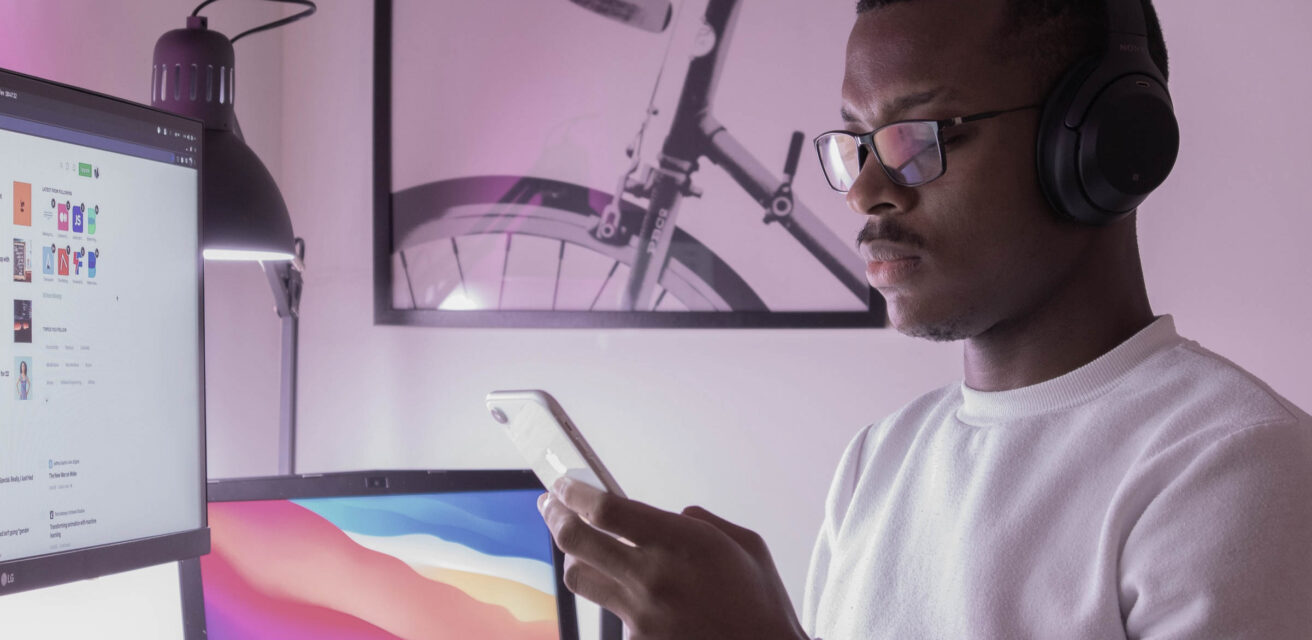
5 Tips to Get Rid of Distractions When Working Remotely
One of the greatest advantages of freelancing is the ability to work from almost anywhere. Whether you’re tapping away at your laptop from a cozy home office, a bustling coffee shop, or even a beachfront hammock, the freedom is undeniable. But with that freedom comes a unique challenge: distractions.
Staying focused while working remotely isn’t always easy, but with the right strategies, you can create an environment that fosters productivity and minimizes interruptions. In this post, we’ll discuss five practical ways to eliminate distractions and make the most of your freelance lifestyle:
- Choose the right workspace.
- Communicate boundaries to others.
- Keep your workspace organized.
- Eliminate digital distractions.
- Build a schedule that maximizes productivity.
1. Choose the Right Workspace
Where you work can make or break your productivity. To stay focused, your workspace should check a few simple boxes:
- A well-lit and comfortable space – Good lighting is crucial for reducing eye strain and staying focused, so position your desk near a window for natural sunlight or use full-spectrum daylight bulbs if needed. An adjustable desk lamp with variable brightness and color temperature helps tailor your lighting for different tasks. Pair this with an ergonomic setup, including a supportive chair, an adjustable desk, and a monitor set at eye level, to prevent discomfort and improve your posture.
- Free from excessive noise and traffic – If you’re working in a café or a coworking space, pick a corner away from the main thoroughfare to limit distractions. Noise-canceling headphones can be a lifesaver in these settings.
- Certain of a reliable internet connection – Nothing disrupts a productive flow quite like spotty Wi-Fi. Always test your connection before starting work, especially if you’re in a new location.
For freelancers who work from home, setting up a dedicated workspace can be transformative. It not only helps separate your work from your personal life but also signals to your brain that it’s time to focus. If you don’t have a spare room, consider a desk divider or even a portable screen to create a visual barrier.
2. Communicate Boundaries to Others
Working remotely doesn’t always mean working alone. Whether you live with family, roommates, or pets, it’s important to set boundaries:
- Let others know your work hours – A simple but effective way to minimize interruptions is to have a direct conversation with those you live with. Share your typical work schedule and emphasize which hours are crucial for focused work.
- Use visual cues – Sometimes, a subtle reminder is all it takes to prevent disruptions. Closing a door, wearing headphones, or even putting up a small sign can be a polite but clear indicator that you’re in work mode.
- Have backup plans – No matter how well you plan, unexpected noise or interruptions can still happen. Being proactive with backup options ensures your productivity isn’t compromised. Identify nearby quiet spots, such as libraries, coworking spaces, or even a friend’s house, that you can escape to if necessary.
For freelancers working in public spaces, noise-canceling headphones not only block distractions but also signal to those around you that you’re focused and not to be disturbed.
3. Keep Your Workspace Organized
A cluttered workspace can lead to a cluttered mind. Either end or start each workday with a quick clean-up, and make sure everything you need is within arm’s reach:
- Have the essentials on hand – Starting your day with all your essentials within arm’s reach minimizes disruptions and helps maintain your workflow. Think water bottle, notepad, laptop charger, snacks, and any project-specific materials.
- Factor in digital organization – Your physical workspace isn’t the only area that needs tidying! A cluttered digital space can make it harder to find what you need and can even slow down your devices. Minimize digital clutter by keeping your desktop clean, limiting browser tabs, disabling unnecessary extensions, and organizing cloud storage with clear folder structures and consistent naming conventions.
- Give yourself an end-of-day reset – At the end of each workday, clear your desk, close unnecessary tabs, and tidy up your workspace to start fresh the next morning. Take five minutes to reflect on what you’ve accomplished, outline your top three priorities for the next day, and set up your workspace for any scheduled tasks or meetings. This makes it easier to jump back in with a clear mind the next day.
4. Eliminate Digital Distractions
Freelancers often rely heavily on digital tools, but they can also be a major source of distraction! Here’s how to take control:
- Mute notifications – Constant pings and pop-ups from apps, social media, and messaging platforms can disrupt your workflow and break your concentration. Limit phone and desktop notifications during deep work sessions. Try only checking your phone every 90 minutes or on your lunch break.
- Set email boundaries – Emails can be a constant source of interruption, especially if you manage multiple clients or projects. To keep them from breaking your concentration, designate specific times to check and respond to emails.
- Use web blockers – Tools such as Freedom or Cold Turkey can temporarily block distracting websites and apps (e.g., social media, news, shopping, and games) during work hours.
These strategies help ensure that technology boosts your productivity rather than detracting from it.
5. Build a Schedule That Maximizes Productivity
One of the best ways to stay focused is to work to a structured schedule:
- Use online calendars – Tools such as Google Calendar or Notion can help you visualize your week – including tasks, deadlines, meetings – and set realistic goals. Take advantage of color-coded labels to differentiate between types of tasks (e.g., client work, admin, and continuing professional development), and set recurring events for regular commitments.
- Prioritize your tasks – Identify the most important projects and tackle them first. This is especially crucial for freelancers juggling multiple clients. Frameworks such as the Eisenhower Matrix can help you categorize tasks by urgency and importance.
- Set goals and track progress – Setting SMART goals (which stands for specific, measurable, achievable, relevant, and time-bound) gives you clear targets and makes it easier to measure progress. For example, instead of setting a vague goal like “Work on client projects,” reframe it as “Complete the first draft of Client A’s project by 5 PM Wednesday.” Track your progress using tools such as Trello, Asana, or ClickUp.
- Plan for meetings and calls – Client calls and team meetings are essential but can disrupt deep work if not planned strategically. Use time blocking to dedicate specific slots for meetings. For example, you might decide that all meetings should happen between 1 PM and 3 PM on Tuesdays and Thursdays. This leaves your other days uninterrupted for high-focus work.
- Schedule breaks – Taking regular breaks boosts focus and prevents burnout. Techniques like the Pomodoro Method (25 minutes of work followed by a 5-minute break) can be especially effective.
If you’re a digital nomad, it’s equally important to account for travel days, jet lag, and time zone differences in your schedule. This will help you maintain consistency and avoid missed deadlines.
Add to Your Freelance Repertoire
If you’d like to start working remotely or add some new skills to your existing freelance repertoire, check out our library of comprehensive online courses. You can even try two lessons from any course for free!





Your email address will not be published.